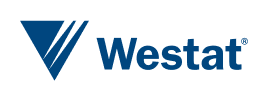This website uses cookies so that we can provide you with the best user experience possible. Cookie information is stored in your browser and performs functions such as recognizing you when you return to our website and helping our team to understand which sections of the website you find most interesting and useful.
How does the Protect MiFamily model improve the well-being of at-risk families?
Evaluating Protect MiFamily

Challenge
To help keep children safe in their own homes and improve child well-being and family functioning, the Michigan Department of Human Services’ Protect MiFamily program provides intensive and innovative long-term, home-based services to at-risk families.
The Title IV-E waivers lift some of the restrictions on how states may spend federal dollars intended for foster care placements.
The challenge is to determine how well the Protect MiFamily service model improves the well-being of these families.
Working with the University of Michigan, Westat is conducting the required evaluation of the waiver demonstration.
Solution
The evaluation is a randomized controlled trial that uses statistical measurements to support outcome, process, and cost analysis methodologies.
The study includes collecting primary and administrative data; performing model fidelity analysis; and conducting process evaluations, outcomes analyses, and cost-benefit and cost-effectiveness analysis.
The primary data collected on treatment group children and families throughout the program stages include child assessments on social and emotional health, parents’ psychosocial assessments and protective factors, and family satisfaction surveys on services received, and services needed, referred, and received.
The child welfare administrative data collected on both treatment and control group families include safety and risk assessments, reports of child abuse and neglect, and foster care placements.
Results
Our evaluation will show whether the Protect MiFamily project model is able to
- Lower the rates of child abuse and neglect
- Decrease the number of children entering foster care
- Help parents better protect and nurture their children
Westat’s evaluation will
- Study the effectiveness of the service model in meeting the needs of at-risk families
- Analyze the fidelity of the service model
- Evaluate family and child outcomes
- Determine if the program is cost-effective
-
Issue Brief
Doula Support in Black Maternal HealthApril 2024
The U.S. currently faces a crisis in Black maternal health. Black women die from pregnancy complications at a rate 2 to 4 times higher than…
-
Expert Interview
Leading with Diverse Ideas: Edwards Shares Vision for JSSAMApril 2024
With 4 decades of designing and managing large, complex surveys, Westat’s Brad Edwards has decided to add another leadership position to his resume by becoming one…
-
Expert Interview
Leveraging WIC EBT Data for In-Depth Program AnalysisApril 2024
Since its founding 50 years ago, the Special Supplemental Nutrition Program for Women, Infants, and Children (WIC) has been a critically needed source of food…



